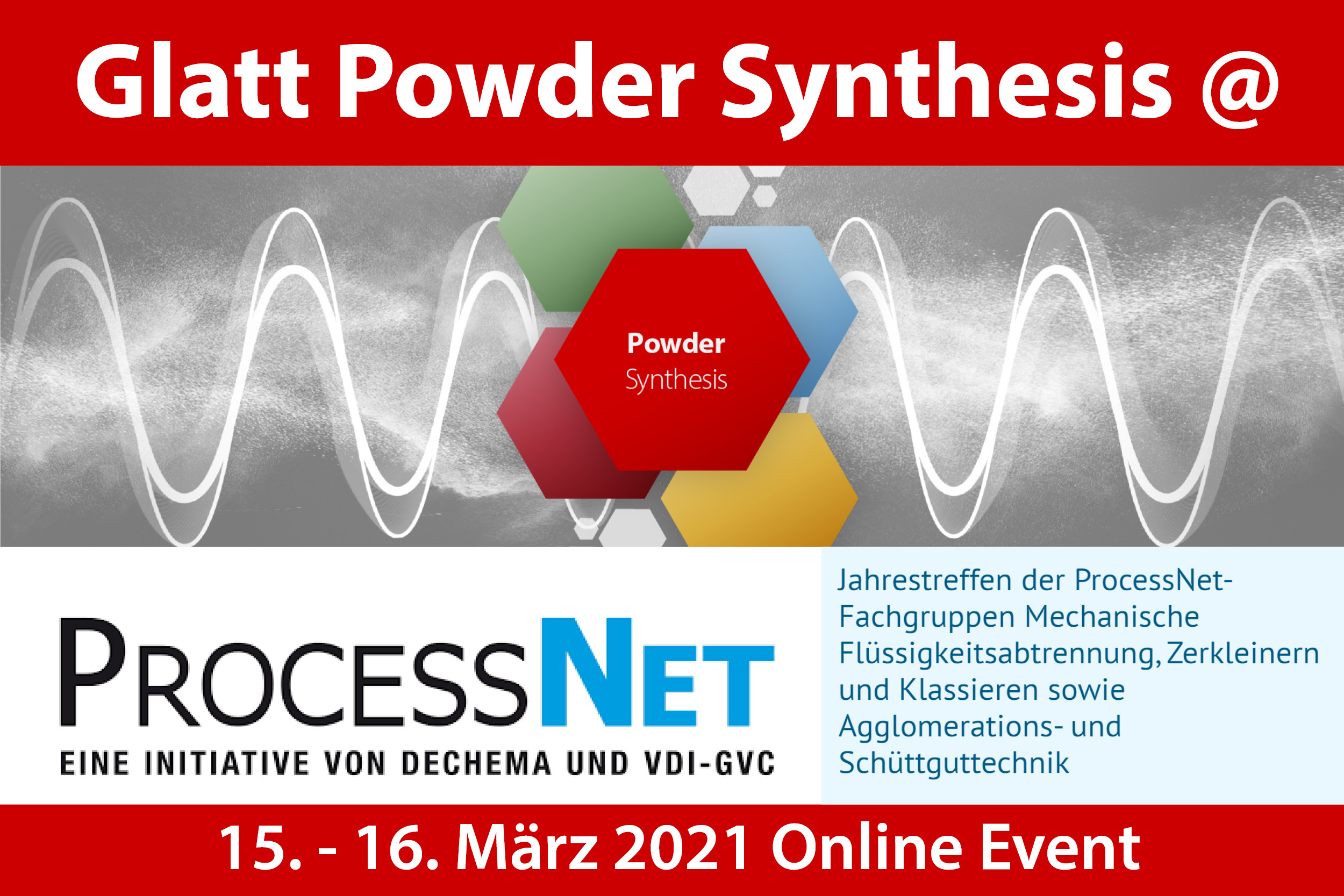
Meet the Glatt Powder Synthesis Experts at the ProcessNet 2021 Online Conference
Join the Webinar! March 15, 2021 – 1:40 p.m.
The pulsation makes the difference! Learn how to benefit from the Glatt Powder Synthesis for drying, coating and calcination of ultrafine powders in one step to enable the precise design of completely new powder types with customized properties.
Dr.-Ing. Viktor Drescher, Manager Advanced Powder Processing, Process Technology Food, Feed & Fine Chemicals, Glatt Ingenieurtechnik GmbH will present the process in his lecture at 1:40 p.m. March 15, 2021.
Today, modern high-performance powders are the basis for solving numerous technological challenges. The high specific surface area of ultrafine powders is a basic requirement for efficient operation of catalysts, for example. In this case, the active material can either be in the form of a layer, or in the form of solid materials, which usually have to be present in a defined crystal structure. However, similar requirements for powders are also found in other areas, such as battery materials, high-performance ceramics or pigments. The production of such powders are usually multi-step processes that require different technologies for manufacturing, coating and calcination.
Using Glatt powder synthesis, these steps can be unified into a single step. The technology is specifically designed for the production and processing of ultrafine powders from suspensions and solutions. For this purpose, the use of liquid precusors offers outstanding flexibility in terms of material composition.
For coating, a suspension of substrate particles and dissolved coating material is injected into a pulsating hot gas stream and atomized. The dissolved coating material wets the particles and the solvent evaporates. At reactor temperatures of up to 1300°C, particles and/or coating material can be calcined above. Despite these versatile reactions, the residence time in the reactor is very short. This is only possible due to the pulsation of the gas flow, through which the heat transfer between gas and particles is up to five times higher than in continuous flows. The characteristics of the pulsating gas flow can be precisely adjusted to the process in terms of frequency, amplitude, process temperature and flow velocity. The high degree of turbulence of pulsating gas flows additionally leads to extremely homogeneous temperature and velocity fields within the reactor. Thus, all particles experience an identical temperature-dwell time treatment.
The technology is presented and different fields of application are described.
Just click here to find out more about the ProcessNet Jahrestreffen der ProcessNet-Fachgruppen Mechanische Flüssigkeitsabtrennung, Zerkleinern und Klassieren sowie Agglomerations- und Schüttguttechnik.


 Copyright: Glatt
Copyright: Glatt